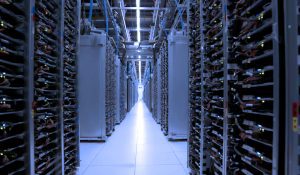Every April, the National Football League (NFL) conducts a player draft in which each of the 32 teams selects new prospects to join their squad. During the months leading to the draft, each team evaluates prospects on many characteristics. The most closely watched and monitored characteristic is speed. Each prospect is timed in the 40-yard dash, 20-yard shuttle, 60-yard shuttle, and three-cone drill. In 2016, over 400 prospects were measured in these categories generating a staggering 1,600 timed results. Why does the NFL go to such lengths to capture these times? Because they know one fundamental law: you can’t teach speed.
NFL teams understand that even slight advantages in player speed can make the difference between a win and a loss. During games they target matchups between a faster player and slower opponents. Teams with superior speed often win games and championships.
Data Center operators, including colocation and cloud providers, can steal a page from the NFL playbook and create differential advantage over their rivals. Speed to deploy new data center capacity can mean the difference between a new customer win, or a major account loss to the competitor. Furthermore, speed to deploy provides internal benefits that keep the home team competitive: Accelerated ROI, reduced downtime, and reduced upfront capital costs.
UPS technology has evolved to meet this market need for speed. Schneider Electric has launched a new UPS that offers a unique blend of pay as you grow and speed to deploy, enabling you to more quickly scale your UPS capacity.
With a traditional UPS solution, as data centers grow it can take 30 to 40 days to add additional UPS capacity. Essentially, you’re adding another full UPS in parallel to what’s already installed, complete with additional batteries. The whole setup has to be tested to show it’s working correctly, with the run time you expect. It’s the same as if commissioning a new system – because that’s essentially what you’re doing.
Starting at 500kVA, the new Galaxy VX dramatically speeds up that process. Upon initial installation, data center owners can size the battery of the unit for its expected, eventual capacity. Then, over time, to increase capacity you simply add power cabinets – but not batteries. That means you don’t have to commission the system as if it were a new UPS, saving 30 days or more on installation.
That increased speed of deployment provides a couple of benefits. First, it lowers operating costs. By adding capacity only when it’s needed, you optimize the efficiency of the unit, which lowers operating costs.
Faster deployment also means faster time to value and quicker return on investment. Consider a colocation provider, for example. If it can save 30 days on installation time, that means it can start leasing compute capacity out 30 days earlier, gaining an extra month’s worth of revenue.
The next time you’re evaluating UPS technology for your data center, take a page from the NFL playbook and reap the rewards of speedy, scalable UPS technology. Click here to learn more about the Galaxy VX – it’s a draft pick you can count on.
